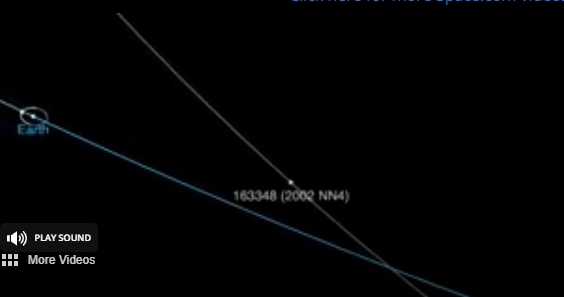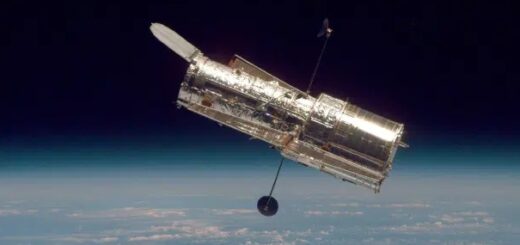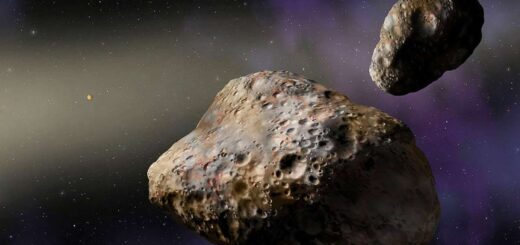Stadium-size asteroid will safely fly by Earth tonight

While 2020 continues to be a difficult year, there is a little good news to look forward to tonight (June 5): a near-Earth asteroid will whiz safely by our planet, and astronomers may be able to see the monster rock’s flight through telescopes.
The asteroid, known as 2002 NN4, is approaching Earth – but fortunately, not too closely. The space rock will fly by at the equivalent of 13.25 times the distance between Earth and the moon, which is roughly 3.2 million miles (5.2 million kilometers) from our planet. The asteroid’s closest approach to us will be at 11:20 p.m. EDT (0320 GMT June 6).
Asteroid 2002 NN4 is more remarkable for its size, with an estimated diameter of between 820 feet and 1,870 feet (250 meters to 570 meters). That’s more than a dozen times larger than the object that slammed into the atmosphere above Chelyabinsk, Russia in 2013, which had a diameter of roughly 66 feet (20 meters).
.
An artist’s illustration of a near-Earth asteroid. (Image credit: Shutterstock)
While the asteroid is big, it is quite dim in all but the largest telescopes. It has a magnitude of just 20, according to NASA’s Jet Propulsion Laboratory NEO Earth Close Approaches database. For reference, that’s even dimmer than the dwarf planet Pluto. The faintest naked-eye stars are around magnitude 6, and a typical six-inch telescope can see stars of around magnitude 13 or 14.
Astronomy broadcasting service Slooh will hold a members-only star party tonight, as long as the weather holds out for their network of telescopes. The party is expected to start at 10:30 p.m. EDT June 5 (0230 GMT June 6) featuring Mike Shaw, host of the weekly audio show “Nightscapes.” (The online observatory is currently offering annual memberships to students for $20, and individual memberships are $100 annually.)
..
NASA and a network of partner telescopes regularly scan the skies for potentially threatening near-Earth asteroids. Fortunately, the agency has found no imminent threats to our planet — but the search continues, just in case.
Studying asteroids and other small objects also helps astronomers learn more about how the solar system formed, since these small worlds were in our neighborhood 4.5 billion years ago when our sun and the planets were only just beginning to coalesce and grow.
Tiny asteroid’s super-close Earth flyby shows planetary protection in action
About 17,000 big near-Earth asteroids remain undetected
See the dramatic increase in near-Earth asteroids NASA has discovered



 Creators of mankind
Creators of mankind Description of “Tall white aliens”
Description of “Tall white aliens” Where they came from?
Where they came from? About hostile civilizations
About hostile civilizations The war for the Earth
The war for the Earth “Tall white aliens” about eternal life
“Tall white aliens” about eternal life Video: “Nordic aliens”
Video: “Nordic aliens” Aliens
Aliens Alien encounters
Alien encounters The aliens base
The aliens base UFO
UFO Technology UFO
Technology UFO Underground civilization
Underground civilization Ancient alien artifacts
Ancient alien artifacts Military and UFO
Military and UFO Mysteries and hypotheses
Mysteries and hypotheses Scientific facts
Scientific facts


















